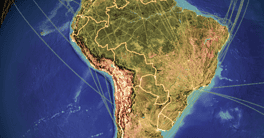In the following stories we explore some of Africa’s contradictions. Eighty percent of Africans are unbanked; at the same time seven of the world’s fastest-growing economies are in this region.
Three numbers in this supplement offer a concise picture of African capital flows: US$62 billion in remittances received, along with $55 billion in foreign direct investment and $50 billion in foreign aid.
These latest-available numbers date to 2015, but the story hasn’t substantively changed. The balance between these three sources of capital and how the funds are deployed will determine the future of Africa. After two decades of strong growth (as well as serious setbacks), with positive developments in agriculture, technology and power generation, Africa stands on the cusp of revival. Yet renewed political instability in some key African countries this year is a sign of unresolved issues, and certainly will not help development.
In the following pages we explore some of Africa’s contradictions. Eighty percent of Africans are unbanked; at the same time seven of the world’s fastest-growing economies are in this region. The continent’s banking scene encompasses large regional players—only two foreign universal banks remain active there. The rush to increase banking access via technology has drawn fintech investment and innovation, prompting Yves Eonnet of TagPay to comment “the future of banking everywhere starts in Africa.”
Growth and inflation coexist alongside high levels of public debt across most of the Continent, making Africa vulnerable to interest rate fluctuations and currency volatility. According to FocusEconomics, this year many of the smaller African countries—like Ethiopia, Ivory Coast, Ghana and Tanzania—expect growth as robust as China’s projected 6.7%. Only three sub-Sarahan countries will report GDP growth under 2%: Angola, Nigeria, and South Africa. Low oil prices and a lack of economic diversity are the main culprits; still, in the last few months both Nigeria and South Africa managed to get out of recession.
This year, however, forecasters also predict double-digit inflation for consumers, with CPI expected to grow by 42% in Ethiopia, 29.6% in Angola, and 17.6% in Mozambique. Only a handful of African countries, such as Botswana and Cote D’Ivoire, are expected to beat a global inflation rate of around 4.6%. The picture is not much different in North Africa, where this year growth is supposed to reach 4% in Morocco and Egypt, but only 2.2% in Algeria and Tunisia.
For corporates as well as banks, Africa remains a continent of tremendous potential—for those prepared to grapple with its problems.



